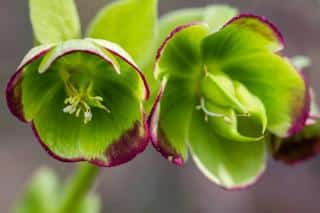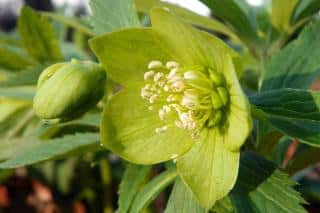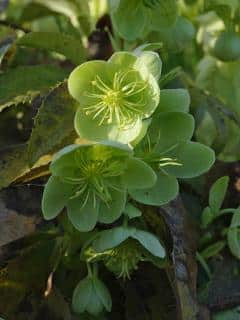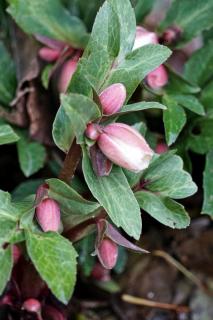

Typically, when one thinks of wild hellebore, what comes to mind is the rare Helleborus foetidus. But there are other varieties that also exist in the wild, too. Consider as Helleborus argutifolius, a species that’s endemic in Corsica, Helleborus viridis, a cousin of the stinking hellebore that’s even more rare, and Helleborus niger, which you can easily come across if you go hiking in the lower alpine mountain range.
Stinking hellebore, sometimes called dungwort or bear’s foot, is, without a doubt, the most common wild hellebore in Europe. Sinking hellebore grows in vineyards, in woods, and in vacant lots, wherever there’s chalky soil. Hardy down to 5°F (-15°C), it can be found in all altitudes up to 5000 feet (1600m).

Green hellebore is a close relative of Helleborus foetidus, and what marks the difference is that the flower is entirely green, without any purple rim. It blooms later on in the season. Much rarer than Helleborus foetidus, Helleborus viridis is a perennial that spontaneously sprouts in deciduous forests, on cool and chalky soil. A plant that loves part sun, it doesn’t like sunny spots at all. Hardy down to 5°F (-15°C), it can be found in elevations up to 4500 feet (1500m).


Helleborus argutifolius is actually the tallest hellebore there is, since it can reach up to 5 feet tall (1.5m) when the growing environment is good. Its leaves are thick, palmate and serrated, with a deep green color. Each simple flower is 1 to 2 inches across, with a pistachio green color: they cluster in groups of 10 to 30 flowers at the tip of tall floral scapes.
Good to know: Helleborus argutifolius is a sub-species of Helleborus lividus, a species that is endemic to Majorca.

The Christmas rose is a poisonous grassy plant, with green, red-streaked stems reaching up to a foot or a foot and a half in height (0.3 to 0.4 m). Short, blackish rhizomes are typical of this species, together with leathery, bright green evergreen leaves. Each floral scape bears between 2 and 4 flowers that are 2 to 4 inches across (5 to 10 cm). Often single flowers, occasionally appearing in pairs, and their color starts out white then shifts to pink as time passes.